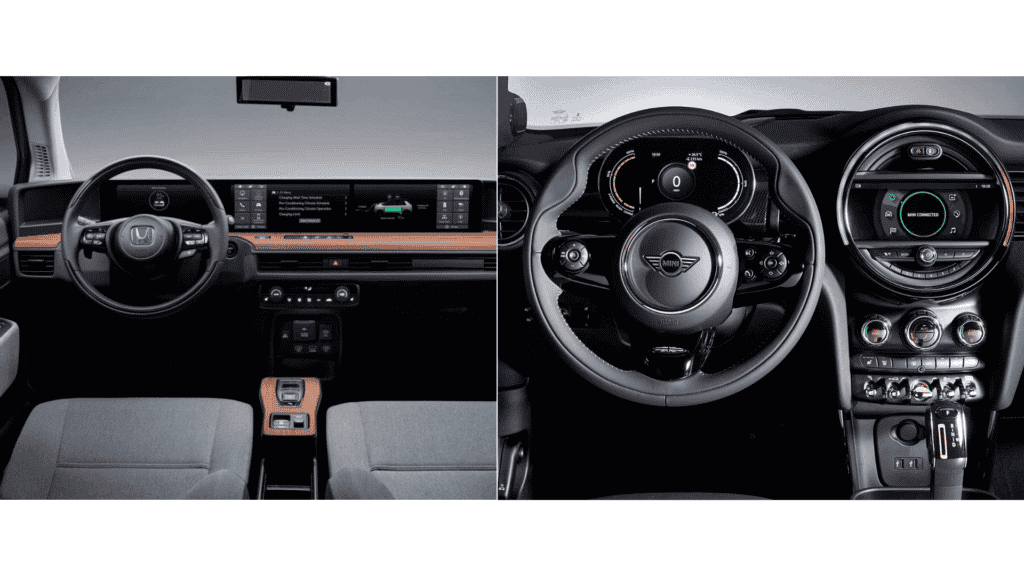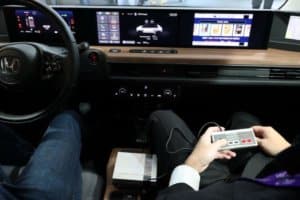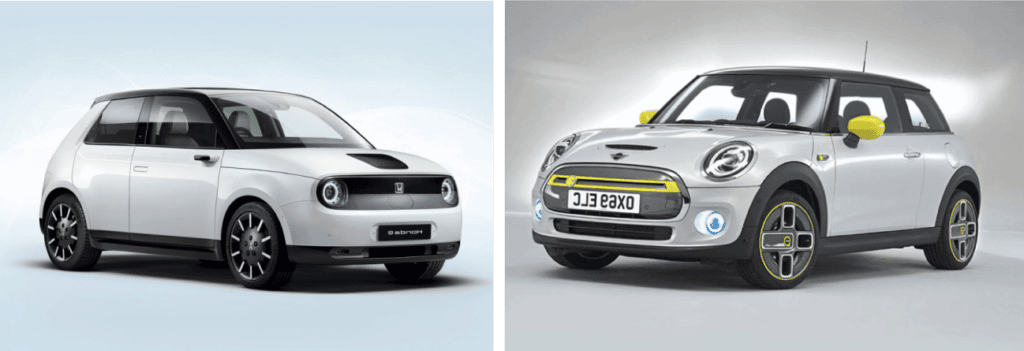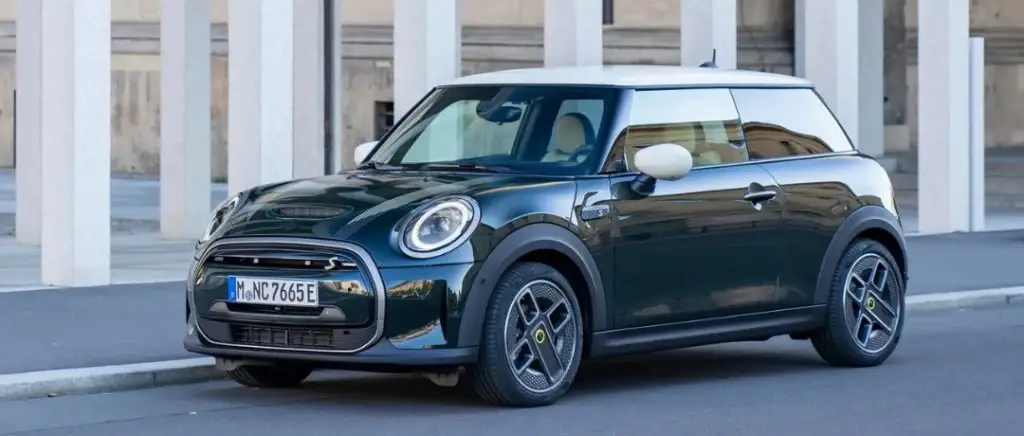Compare these two electric cars
With our electric vehicle comparison tool you can compare the :
Monday to Friday 9h 12h30 - 14h 19h
01 76 40 35 38Performance
In terms of powertrains, the Mini Cooper SE features a 135 kW (184 hp) electric motor developing up to 270 Nm of torque. According to the British manufacturer, the Cooper SE accelerates from 0 to 100 km/h in 7.3 seconds. However, the model is limited to 150 km/h.

Unlike the Mini Cooper SE, the Honda e is available with two engine options. A 113 kWh (154 hp) electric motor developing up to 315 Nm of torque. The Honda e accelerates from 0 to 100 km/h in 8.3 seconds, with a top speed of 145 km/h in the Advance trim level. For the second trim level, Honda e offers a much more modest powerplant, reaching 100 kW (136 hp).
Autonomy and recharging
In terms of range, both city cars are designed for urban driving. A far cry from the long-range models on the market. In fact, there's no surprise here. They don't exceed the 300 km mark in the WLTP cycle.
Despite a slightly larger 35.5 kWh battery for the Honda e. The British manufacturer has announced a range of 234 km for the Mini Coooper SE with a 32.6 kWh battery. This compares with 220 km WLTP for the Honda e in Advance trim (35.5 kWh).
In terms of recharging, the Mini Cooper SE can be recharged up to 50 kW in direct current via a CSS socket. This enables it to recharge from 10% to 80% in just 28 minutes.
What's more, recharging at home and at public charging points is carried out using an on-board three-phase Type 2 plug capable of supporting up to 11 kW. This 11 kW charger enables the Mini Cooper SE to recharge from 0 to 100% in 3h15.
Unlike the Mini, the Honda e in rapid plug-in mode supports up to 100 kW peak power. However, it is more reasonable to accept an average charge power of 45 kW. This enables the Honda e to reach 10-80% in 30 minutes. In terms of fast recharging, the two city cars are at the same level, with around 30 minutes to reach 80%. However, the Honda e 's on-board plug is limited to a real capacity of 6.6 kW. Much slower, allowing you to reach 0-100% in 5h45.

Dimensions and weights
In terms of dimensions, the two city cars are relatively close. In fact, the Honda e is a few meters taller than the Mini Cooper SE. However, it's important to note that the Honda e is a 5-door, while the Mini has only 3.

For the Mini, size is no obstacle. On the contrary, with a front-engine, unlike the Honda e, it has 211 liters available in its rear trunk. This compares with just 171 liters for the rear-engined Honda e.
However, with the seats folded down, the Honda e offers 857 liters of space. This compares with just 731 liters for the Mini Cooper SE.

Inside, both models are a perfect match for the interior of a city car. Much more timid, the Mini Cooper SE is modelled on the interior of the British manufacturer's thermal Mini models. A very classic interior, which may disappoint the most technophile among you. Not least because of the lack of infotainment.
The interior of the Honda e is much richer and more innovative in terms of functionalities. The dashboard features 5 screens. Firstly, the two screens on the sides are dedicated to the rear-view camera images.
Camera mirrors are available as standard equipment. They improve visibility at night or in the rain, and reduce blind spots. The other three screens are used to display navigation information and various functions specific to electric cars.
What's more, the Honda e has a tight turning radius of 4.30 meters, making it comfortable and easy to drive in urban areas. Thanks to its tight turning radius, it's virtually possible to turn around on the spot.

Discover the electric cars available from Beev
Get my offerAvailability and prices
Available from €37,600 (excluding environmental bonus), the British manufacturer offers a second trim level in addition to the "Greenwich" trim. The "Yours" finish costs €40,800. These include the addition of a head-up display and adaptive LED headlights.
On the other hand, Mini is offering a specific business trim from €32,900 or €360/month. Indeed, the Mini Cooper SE Business retains the same features as the British city car's first trim level, "GreenWich".
The Honda e has been available for pre-booking since summer 2019, and is now available from €35,060 for its 100 kW version (excluding environmental bonus). With a first wave of deliveries during this spring 2020 throughout Europe.
What's more, the "Advance" finish is available from €38,060 (excluding environmental bonus) with a more efficient 113 kW engine.

Honda e vs Mini Cooper SE: the result
Points summary :
Performance: Mini Cooper SE
Range: Mini Cooper SE
Refill: Draw
Dimensions and weight: Honda e
Availability and price: Honda e
These two city cars both meet the different expectations of drivers on the automotive market. The Mini Cooper SE is a much more sober and discreet car. The Honda e has a much more innovative design.
If you're more of a technophile, the Honda e is sure to win you over with its various functions and geek appeal, including the possibility of playing video games while recharging.
Built on the basis of a Cooper S, the Mini Cooper SE is a no-risk model for the British company. In fact, you're sure to get a car in the classic Mini line, with no real added value.
For both vehicles, the price is rather high for their range and low trunk capacity. However, their distinctive styling and fun, relaxed driving experience make it easy to forgive the price tag.
From our point of view, we love both models. Mini finally offers us an electric model, which will delight fans of the brand. Honda, on the other hand, has won us over with its neo-retro design, with its emphasis on infotainment.
Electric carsfor dummies Download this comprehensive guide to understanding electric cars. Download the white paper White paper
































